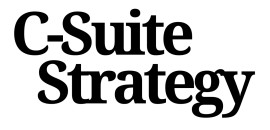The Basics of Discounted Cash Flow Analysis
Grasping the Fundamentals of DCF Analysis
Discounted Cash Flow (DCF) Analysis is a cornerstone in corporate financial modeling, widely utilized to assess the value of an investment, a company, or even entire projects. At its core, DCF analysis calculates the present value of expected future cash flows using a discount rate, providing a clear view of an entity's potential for profitability and growth. In financial modeling, cash flow projections form the backbone of the DCF framework. The analysis distinguishes between free cash flow, available to be paid back to equity and debt holders, and the dividends or interest that reduce the cost of capital. Cash flows are discounted back to their present value by applying the discount rate, which often reflects the weighted average cost of capital (WACC). This rate encapsulates the cost of equity and the cost of debt, and it serves as a critical benchmark against which company valuation is measured.Key Components Defined
Understanding the mechanics of DCF involves recognizing several vital components:- Cash Flows: These encompass net operating cash flows that arise from operational success.
- Discount Rate: A pivotal figure representing WACC, comprising both cost of equity and cost of debt. It reflects the expected return required by investors and creditors for providing capital.
- Terminal Value: Evaluates the company's projected value beyond the forecast period, considering perpetual growth.
How Tax Rates Influence DCF Calculations
The Impact of Tax Rates on DCF Calculations
In Discounted Cash Flow (DCF) analysis, understanding how tax rates influence outcomes is crucial for accurate company valuation. Tax rates affect various elements of financial modeling, including cash flows and the cost of capital, which are critical components in the DCF method.
One major area where tax rates play a role is in determining net operating cash flows. These flows are influenced by the effective tax rate, which directly impacts taxable income. By applying the marginal tax rate, companies can calculate potential tax savings that contribute to the overall valuation.
The relationship between tax rates and the cost of equity and debt is equally important to consider. A change in tax rates alters the cost of equity calculations, influencing the risk premium and, ultimately, the company's overall cost of capital. A higher tax rate can lead to increased tax shields on debt, thus affecting the free cash flows available to equity holders.
Moreover, deferred tax liabilities and assets must be carefully examined in DCF models. Changes in tax legislation can lead to variations in these items, affecting predicted cash flows and valuation estimates.
For C-Suite leaders looking to make informed strategic decisions, understanding these dynamics is essential. This comprehensive approach not only ensures more precise financial modeling but also positions companies to better align their financial strategies with optimizing financial strategies for C-Suite leaders.
Strategic Implications of Tax Rate Changes
Strategic Tax Rate Adjustments for Optimized Company Valuation
Tax rates hold considerable weight in discounted cash flow (DCF) calculations, significantly affecting a company's valuation. CEOs need to be aware of how changes in these rates can impact both the cost of equity and the overall financial standing of the organization. A shift in the tax landscape can alter taxable income, influence the net operating cash flows, and thereby impact the company's strategic decisions.
Primarily, the interplay between tax rates and the DCF model is highlighted through the effective tax rate which modifies the cash flows and ultimately, the valuation predictions. The marginal tax rate plays a critical role here, as it affects the taxation of free cash flows that a company can generate. In line with shifting tax rates, it remains imperative for C-suite experts to adjust financial modeling to ensure the outputs remain realistic and practical for strategic review.
Additionally, tax rate variations can present opportunities for strategic adjustments. For instance, a company witnessing a reduction in the corporate tax rate can experience increased cash flow, as less cash is allocated to tax expenses. This enhanced liquidity can then be channeled towards debt reduction or reinvestment in capital projects, resulting in improved capital cost efficiency and equity value.
On the other hand, understanding when and how to leverage deferred tax liabilities can function as a strategic asset. The ability to plan around deferred tax scenarios may lead to a more advantageous tax position, offering a competitive edge in the market.
Further supporting strategic positioning is the tax shield derived from cost of debt. By capitalizing on these shields, which decrease taxable income through allowable interest deductions, companies can enhance their valuation while strategically managing their beta risk exposure.
For practical application insights, uncover more about how these elements integrate into strategic financial planning through exploring innovative digital strategies.
Integrating Tax Rate Considerations into Strategic Planning
Navigating Tax Rate Considerations in Strategic Decisions
The evolution of tax rates presents both challenges and opportunities, impacting a company's cash flows, modeling, and strategic planning in numerous ways. Understanding how to effectively incorporate these variables into your broader strategy can significantly enhance your company’s financial outcome. Firstly, a company's marginal tax rate plays a crucial role in determining its net operating income and consequently affects the valuation of its free cash flows. When you consider the tax shield generated by debt, a higher marginal tax rate can actually lower your cost of capital. Therefore, it is essential to integrate these tax advantages into your strategic planning. Secondly, the impact of changes in tax rates on discounted cash flow (DCF) analysis cannot be overstated. The effective tax rate can alter the discount rate, affecting how net income is projected into the future and ultimately shaping your company's valuation models. This makes the frequent recalibration of financial models essential to stay aligned with the evolving tax landscape. Moreover, deferred tax assets or liabilities introduced through changes in tax rates may offer strategic advantages. Companies can leverage this knowledge to optimize their tax cash flows, which signifies the priority of embedding tax considerations into an ongoing strategy for maximum effectiveness. Having robust financial modeling can help identify potential tax savings and assess the risks associated with various tax rate scenarios. This practice ensures informed decision-making, vital for sustaining growth and maintaining competitiveness in an ever-changing economic environment. For CEOs, the implications extend beyond numbers. Your ability to anticipate and react to tax rate shifts influences your company’s capital structure—be it balancing debt and equity or managing cost equity efficiently. This comprehensive approach not only optimizes your current financial strategy but also positions your business to adapt nimbly to future changes in tax policy.Case Studies: Impact of Tax Rates on Company Valuation
Demonstrating Tax Rate Effects through Real-World Examples
Examining the impact of tax rates on company valuation through specific case studies provides actionable insights for CEOs aiming to optimize financial strategies. As discounted cash flow (DCF) analysis incorporates variables such as cash flow, debt, and equity, understanding these real-world instances becomes crucial.
Consider a technology company facing a fluctuating marginal tax rate. The recent increase in tax rates led them to reassess their cost of debt and equity. By revisiting their financial modeling approach, they adjusted their discount rate, ultimately affecting the valuation outcome in their DCF model. The effective tax rate played a pivotal role in understanding the 'free cash flows' after taxes, which were initially underestimated.
In another instance, a manufacturing business capitalized on its deferred tax assets. Through astute strategic planning, they harnessed the tax shield benefits available, thus lowering their taxable income and increasing net operating cash flows. Their modeling approach incorporated these tax savings as a core component, illustrating that even modest adjustments in deferred tax can substantially impact cash flows and company valuation.
For both of these cases, a shift in tax rate assumptions helped recalibrate their cost of capital, with the company emissaries closely monitoring the ramifications on their overall financial health. Recognizing these dynamics allows businesses to navigate complex financial landscapes effectively.
Ultimately, understanding how other companies have successfully (or unsuccessfully) incorporated tax considerations into their strategic framework is invaluable for leaders. A comprehensive approach that prioritizes successful case studies can ultimately guide CEOs in making proficient, strategic financial decisions regarding their unique tax circumstances.
Best Practices for CEOs Navigating Tax Rate Challenges
Implementing Effective Tax Strategies
Navigating the landscape of tax rate challenges as a CEO can be complex, but implementing effective strategies can mitigate potential financial impacts.- Understand and Monitor Tax Changes: Stay informed about changes in marginal and effective tax rates, as they directly influence your financial modeling and discounted cash flow evaluations.
- Optimize Free Cash Flow: Implement strategies to maximize free cash flow by leveraging tax shields and tax savings. This involves reducing taxable income through deferred tax approaches and optimizing net operating cost structures.
- Balance Debt and Equity: Analyze the cost of debt versus the cost of equity in the context of tax rates. Often, tax advantages can be derived from strategic debt management, enhancing your company's valuation.
- Integrate Tax Planning into Strategic Decisions: Make tax considerations an integral part of strategic planning, involving your CFO and financial advisors in discussions about tax implications on your firm's capital and cash flow.
- Regularly Review Financial Models: Given that tax rates can have a significant impact on cash flow DCF calculations, regularly update your financial models to reflect current tax scenarios. This will help in devising more accurate and strategic business plans.













